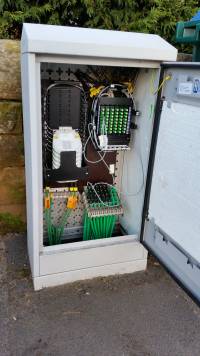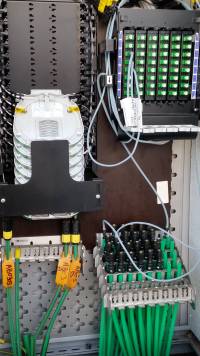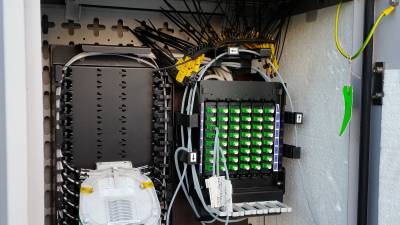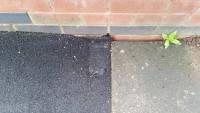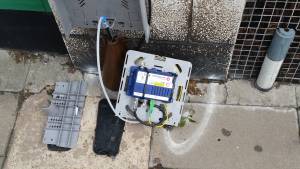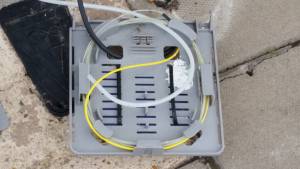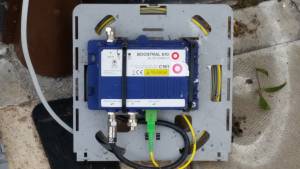Table of Contents
Virgin Media Fibre
Background
The old and the new, the larger cabinet is part of the rather ancient Coventry Cable TV network which ceased ages ago. The smaller cabinet is the part of the new fibre roll out and collects all the consumer blown fibre conduits.
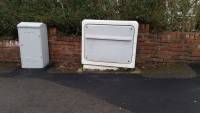
Streetworks
The new Virgin Media network seems to be a true fibre network, ie. fibre right to the premises. To find out more about current products, please see Virgin Media's website.
As a result the digging is to lay blown fibre ducts to all the premises passed. These show a new footway box being constructed. The smaller ducts are to premises and larger oval ones seem to go the distribution cabinets.
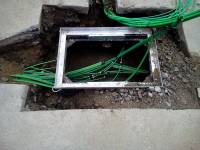
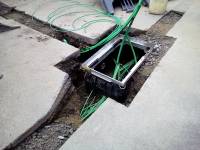
Below is the inside of one of the distribution cabinets Virgin thoughtfully forgot to lock. The blown fibre from the customer's Omnibox appears trhough the duct termination area at the lower right hand side, and then is patched in to what looks like a SC fibre connector. The tails from this patch panel look like they go to the splice area on the left hand side.
This is the duct termination point outside each premises. When a subscriber is added, the installers continue the blown fibre duct to the NTE which is fixed to the outside of the premises in an “Omnibox”. This converts the optical signal on fibre to an electrical signal on coax cable.
Example of the blown fibre tubes used. These are buried direct with no additional protection, clearly this is why the walls are so thick on the tube.
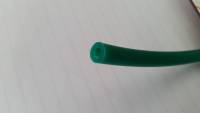
External House kit
This is an “OmniBox” which has fallen off (or been hit as it is right on the pavement in a busy shopping area) and shown the inside of the equipment. Just above the brown cone, you can see the join in the fibre duct connecting the street duct with the NTE clear duct, this goes to the rear of the bracket where there is space for coiling the spare fibre. Just below the brown cone and under the grey panel is the black duct access cover, this unit is called a “Toby” apparently, it has the green fibre duct going in underground. The blown fibre coupler between the black duct and the clear OmniBox fibre duct can be seen coming out of the brown cone.
On the front of the internal mounting panel there is the fibre to coax converter ( [[https://vectortechnologies.com/product/boostral-711/|Boostral 610 ). This accepts a single strand of fibre ( yellow, so maybe single mode fibre, and the green SC or sometimes ST connector) which uses two wavelengths of light, one for the upstream and another for the downstream signal.
The output is on a single coax cable with an F connector. This goes in to the internal Set Top Box modem.
This page has been accessed for:-
Today: 1
Yesterday: 1
Until now: 533
